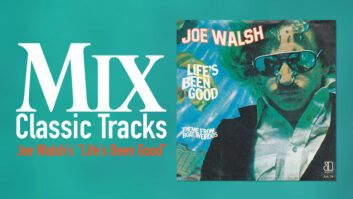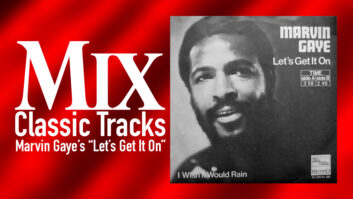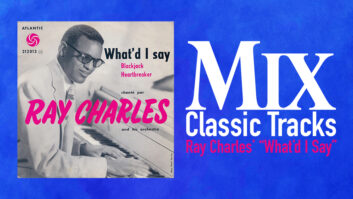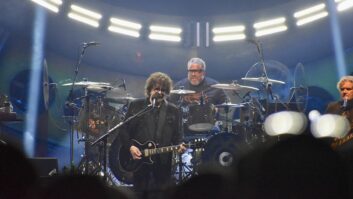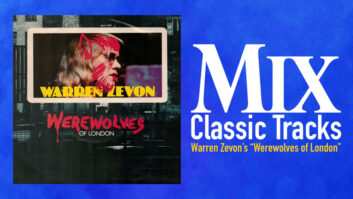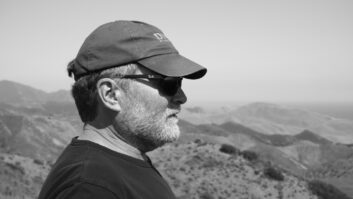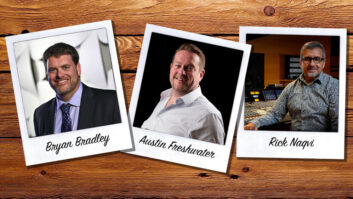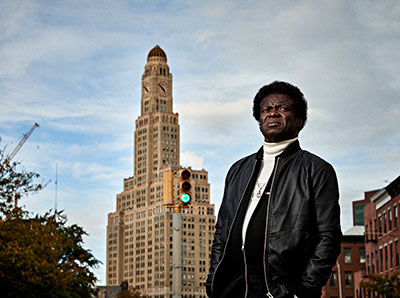
The challenge for producer/engineer/guitarist Thomas Brenneck, who has completed his third album with the fabulous ’60s-style soul singer Charles Bradley, is somehow to capture the sound of the great classic R&B records he loves, yet twist things just enough so that Bradley’s releases have their own place.
Brenneck is the first to point out that it all starts with the performance; everything grows from Bradley’s immense, raw talent and the deeply personal way he connects with his audience, and from the inventiveness and feel that Brenneck and the rest of the band bring to bear.
“Musicianship and songwriting have the biggest effect on the timeless quality that we’re going for,” Brenneck says. “But it can still be like climbing a mountain, to sound like the records that we love.”
Brenneck learned many of the engineering techniques he uses from his friend Gabe Roth, the bassist, producer/engineer, and musical director for Sharon Jones & the Dap-Kings, among other things.

Thomas Brenneck
“Gabe is also the one who introduced me to Charles,” says Brenneck. When they first met in 2001, Bradley was performing as a James Brown imitator to eke out a living as a singer. “He wore his James Brown wig all the time,” Brenneck recalls in the film The Soul of America, a documentary about Bradley’s life and career.
Back then, Brenneck was still making records in his parents’ basement. Later, he built Dunham Studios (Brooklyn), where two of the songs on Changes were recorded and mixed as a Record Store Day single in 2013: the original “Ain’t It a Sin,” and the Black Sabbath cover (!) that serves as the album’s title track.
Soon after that, the lease on Dunham Studios ran out, and Brenneck opened Diamond Mine in Queens, with the help of three bandmates: drummer Homer Steinweiss, saxophone player Leon Michels and bassist Nick Movshon, all of whom play on Bradley’s records.
“It’s a 1,000-square-foot loft. [Studio and technical consultant] John Klett designed the studio and helped us choose dimensions and materials,” says Brenneck. “Because we record full bands live often, we wanted to have a nice-sized live room, as well as a good-sized control room. There’s also a really small iso booth and a lounge.”
The centerpiece of Diamond Mine’s control room is a custom 24-channel 1970s Spectrasonics console fashioned by joining separate 16- and 8-track boards. “It’s got a really specific heavy, thick sound to it,” Brenneck says. He has since changed to an MCI tape machine, but when they made Changes, his recording platform was a 1-inch, 16-track Tascam.

Thomas Brenneck
Brenneck begins Bradley’s sessions with the rhythm section. “That’s bass, drums, rhythm guitar and organ in the room,” Brenneck says. “I don’t think we cut anything with less than four people, set up in a square so we could see each other.”
Brenneck captured drums with two Altec birdcage mics: a 639a overhead and a 671 ribbon on the kick. “Very little EQ, very little compression, and then I’d just check the phase and sum them to one track,” he says.
Bass was taken DI, but they would leave a bass amp turned on quietly in the room, so the musicians could feel it without wearing headphones. “I use an Electro-Voice 664 on my guitar, and an EV RE15 on Leslie, the same mic I use for Charles’ vocals on the whole record,” says Brenneck.
Bradley’s vocals are always overdubbed (as are horns and backing vocals), and require various types of preparation. “I know the man pretty well at this point, so I like to get him comfortable, and have a few drinks, so I get a good performance out of him,” Brenneck says. “And on this record particularly, he was obsessed with burning Palo Santo, so the room was fairly full of smoke.”
Bradley also needs time to nail down some of the song lyrics. “Charles’ literacy is not so happening,” Brenneck says. “When I first met him it was clear to me and we put him in reading classes, but he’s a 67-year-old man and he dropped out of school in junior high. It’s hard for him to pick it up now. If he’s looking at a piece of paper trying to sing, he can’t sing to his best ability.
“So what I do is a lot like what Jimmy Reed’s wife used to do. I just whisper the line—take it line by line. What’s amazing, though, is there’s still plenty of room for Charles to do a lot of amazing improvising, which I’m all about capturing.”
Once the performances are captured, however, Brenneck still has work ahead, to nail the classic soul sounds he’s after. “We’re going for a ’60s production, but all our gear is rock-solid 1976,” he says.
One key that the producer has found involves using vintage filters. “More than EQ’ing anything, my favorite thing is filtering,” he explains. “I remember listening to old Allen Toussaint records—The Meters and Lee Dorsey and Ernie K. Doe—and on all those old New Orleans recordings, the drum sound is so iconic, and that’s the kind of stuff my ear always leans to. I think it was Gabe who pointed out to me, it sounds like the whole band is in mono and everything above 6k is filtered out, and the vocals have all that room to breathe.”

